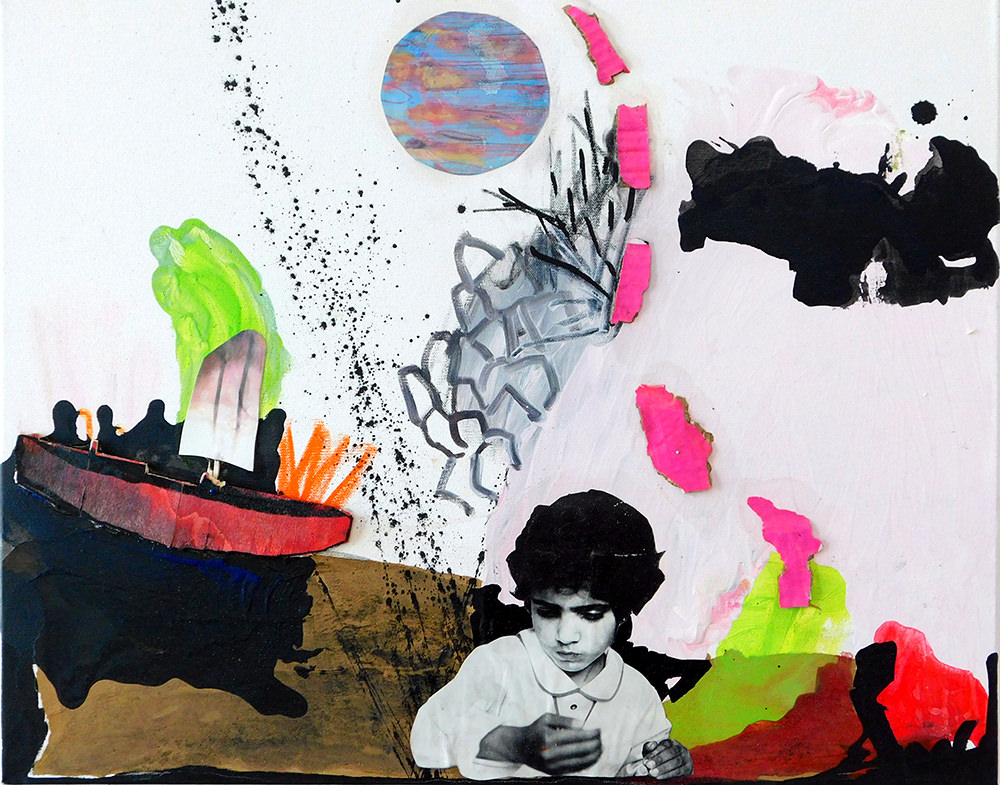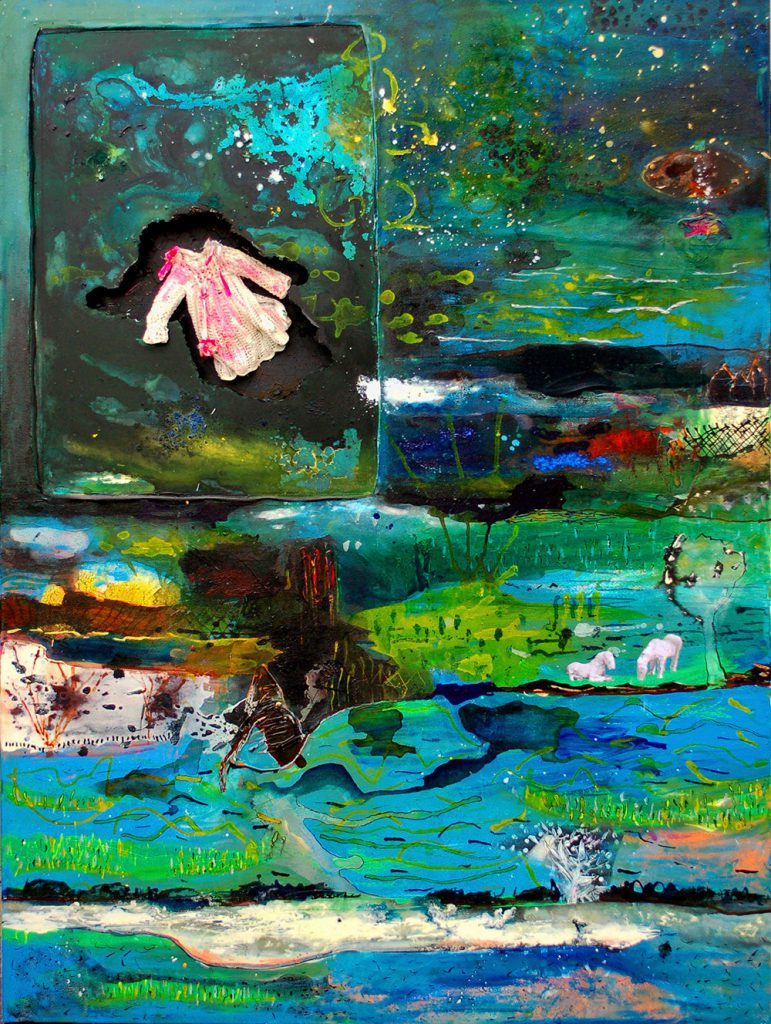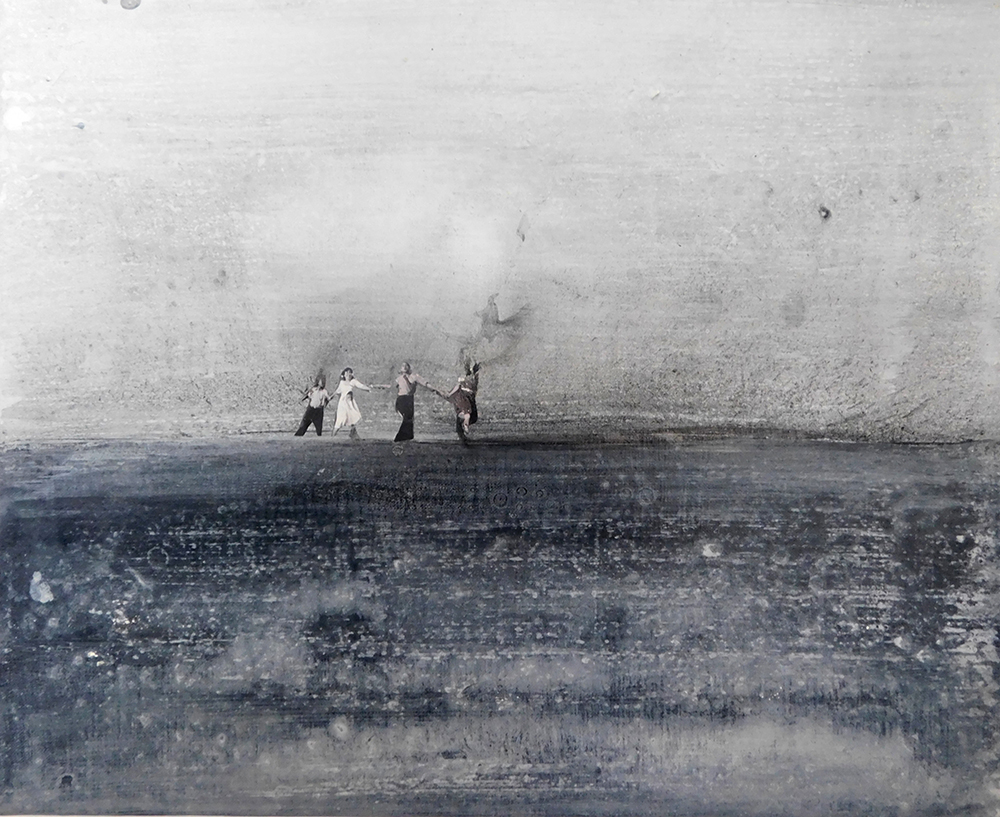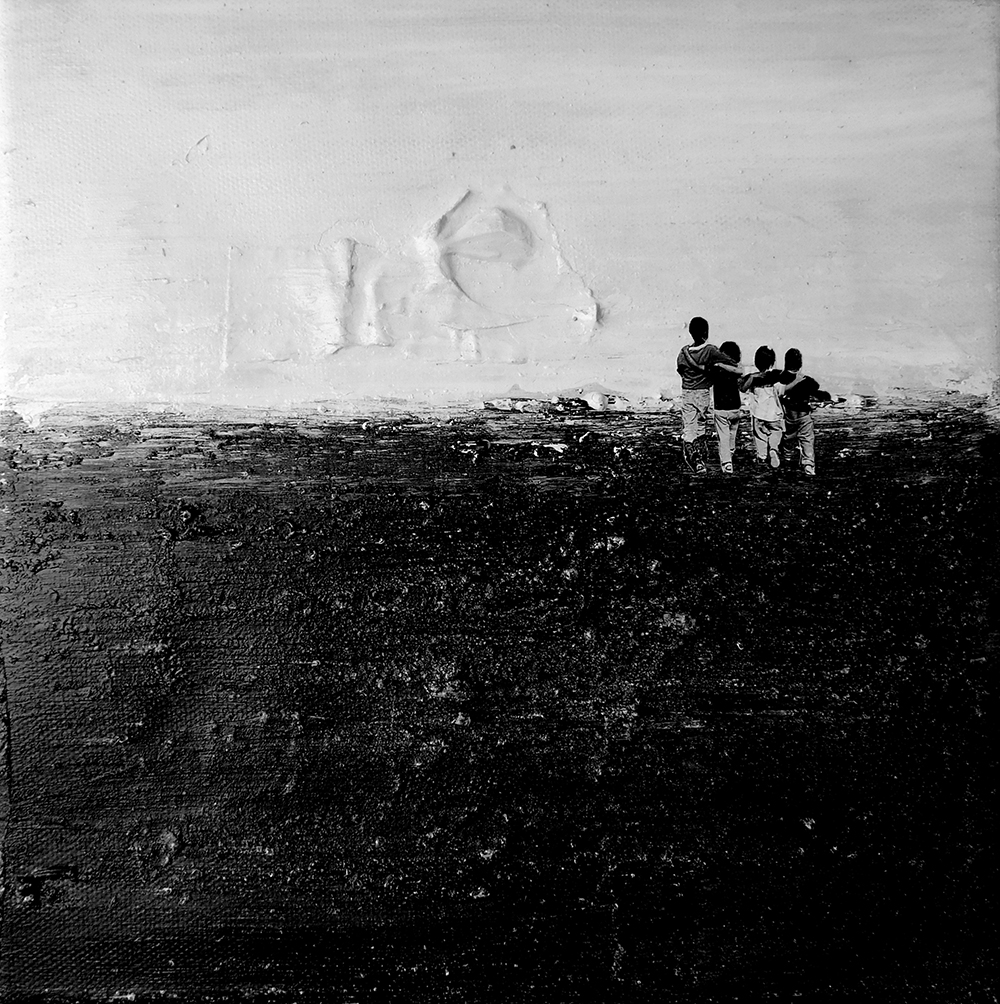Michael Gatzke is a painter. He was born in 1957 in Cologne and he now lives and works there. His works explore the connection between man and landscape. Gatzke studied at the Alanus Hochschule Alfter in Bonn and graduated as an advanced fine arts student. He has participated in exhibitions and art fairs in Switzerland, France, Belgium and Germany.

Maria Sveva Scaglione: How did your studies at the Alanus Hochschule Alfter influence your artistic process?
Michael Gatzke: Studying at Alanus Hochschule Alfter was of great importance to me. It has led to my artistic orientation. In addition, my artistic perception was sensitized. And, of course the exchange with the professors and other students was very helpful for my own inspiration.
M.S.S. You are an artist of this century. How would you describe your figure and your work?
M.G. I am a painter in the 21st century. A “fallen out of time”? Because everything is already painted, the representatives of the new media and participatory approaches are the artistic blockbusters. The “exhausted art form” of painting often does not trigger anything more than a shrug of the shoulders. Nevertheless, or should I say, that’s why I am unflinching, even happy, to be able to tie in with all the old painter princes. And here I find my own position and strengthened it. The creative process is a balancing act between purposeful self-forgetfulness and conscious control. Chaos and order. My goal is to avoid the painstaking caution that I find inhibitive. And to find a result that neither follows the calculation nor pays homage to randomness alone. Rather, it represents an approach to one’s own soul space. It is the way I have become aware of, to gain clarity and to make the world more comprehensible and more explainable.

M.S.S. Is there someone, or something, you look at as an inspiration for your paintings?
M.G. Painting is an inner need. Although not as vital as breathing, but as the social exchange with others. Every artistic visual experience drives me. Especially when it comes to the very big artists, such as Georg Baselitz, Peter Doig, Anselm Kiefer, Daniel Richter or – less famous – Hans op de Beeck.
M.S.S. What are the themes behind your paintings?
M.G. Figurative and landscape are my current main themes and stand side by side. Image landscapes, increasingly complex, always with a narrative dimension. The picture space which keeps the eye in constant motion triumphs. My pictures are atmospheric. Then they breathe the conciliatory calm and boundlessness of a painterly and compositively, newly created small universe.
M.S.S. And why did you choose them?
M.G. It is the tranquility and the depth that best represent themselves – for me.
M.S.S. Can you tell me something about the atmosphere in your art series At an Unattainable Distance?
M.G. To illustrate this, I would like to start with a quote by Günter Seubold in Silence and Being from 2014, and there from the essay Aesthetics of silence: ”Silence is fundamental for every individual, for every culture as a whole. A culture that forgets that and sets it on “full droning” is dying, basically dead, even if she keeps herself on her feet for a while. But what keeps her on her feet does not come from the time of the full boil, but from a time before that, a time when silence had not been destroyed. One feeds on the nourishing culture or fruit of earlier decades and centuries, while one pursues its consuming business and pleasures.”
Well watched. Our fast-paced world is always in the fast lane at high speeds, but it does not come any more, do not allow yourself any more breather. Does not come to your senses anymore, to reflect.
There is an elementary reason in the Bible: “For in six days the LORD made the heavens and the
earth, the sea, and all that is in them, and he rested on the
seventh day and saw that it was good.” (Exodus 20:8-11). These biblical 7 days have tended to be lost in modern times. Silence, and that includes silence, is not very popular in our busy time. Silence, that sounds somehow stale, outdated, even strange. Silence has no room left. Silence does not just happen. You have to make a conscious decision to be quiet. Especially in the context of the Internet, iphone, Facebook, Instagram and Twitter, where the images rush past one at a regular rate. To experience silence, you have to go offline.
So my new series At an Unattainable Distance are based on an attempt to capture the slowness of images, countering the tempo of electronic picture noise. My pictures are missing everything colorful and loud. Ostensibly nothing happens or only little, but everything seems possible at any time. Perhaps the sceneries found there only form the resonance to my inner worlds. There are really no real pictures of landscapes to be seen, but wide open horizons, but they come from the abstraction. The few people and animals appearing in collage form seem archaic and concentrated. They do not really participate in their activities.

M.S.S. Is the connection between man and landscape at the center of your work or is it just a part of it?
M.G. In fact, I follow 2 divergent painting principles: the abstraction and that of the figurative population (often through collage). The resulting compositions can also be understood as a tension field of the spiritual and the physical. And what’s more, the sharp contrast creates a new symbiotic view, where the sum is more than the parts.
M.S.S. Can you tell me something about the dimension of time in your works? How would you describe it?
M.G. A special temporal component does not exist in my pictures. If so, then in the sense of slowness, almost a standstill. Or an infinity. The aspect of silence is central to my work…








